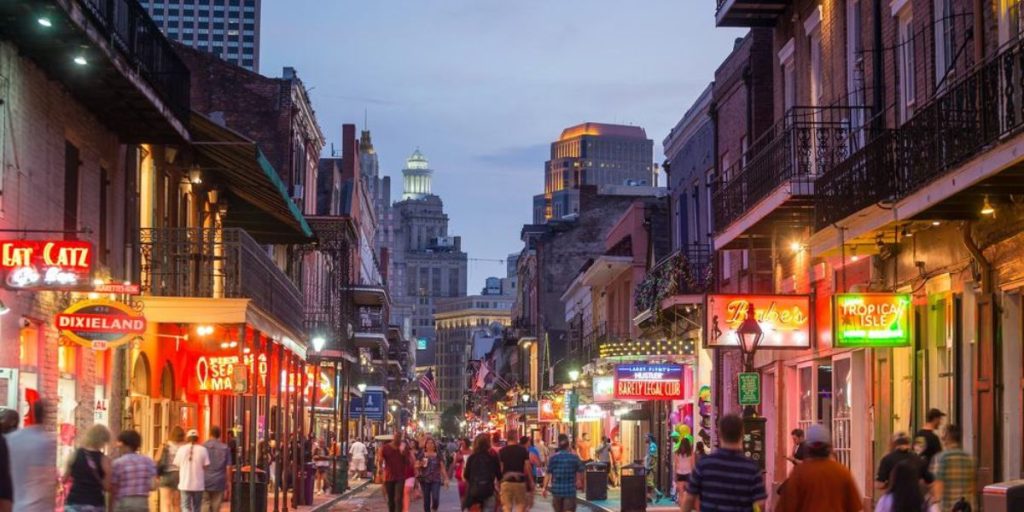The bayou air in Louisiana is dense with humidity, cypress tree aroma, and the anticipation of a delicious crawfish boil. A joyous tune that reflects the state’s unique culture flows forth from colorful shotgun dwellings. From hearty Mardi Gras festivities to sultry jazz, the “Sportsman’s Paradise” that is Louisiana has a rich tapestry of traditions. However, a tale of migration is revealed beneath this alluring exterior.
A disturbing pattern has emerged in recent reports and statistics: a large number of people are abandoning small communities in Louisiana at a rapid pace. This isn’t a single instance; a complicated network of problems is driving whole communities to flee. This article investigates five towns in Louisiana that are seeing a sharp drop in population and attempts to pin down the causes of this mass migration.
Isle de Jean Charles
The tiny island south of Houma, Louisiana, known as Isle de Jean Charles, is where our adventure starts. The island, which was once home to a prosperous fishing population, is now a metaphor for the devastation that climate change is wreaking. The island has reduced in size by half due to years of continuous coastal erosion caused by increasing sea levels. A school, shops, and church that used to be a part of this thriving neighborhood are now all but gone.
The fate of the island is precariously balanced. Residents are compelled to leave their ancestral houses as each storm erodes the remaining landmass. Longtime local John Moore recalls large areas of sand where he used to play with his siblings. The ever-increasing water level is now lapping at his front door, serving as a continual reminder of how transient his environment is. This migration is about more than simply giving up land; it’s also about abandoning a way of life that is inextricably linked to the bayou.
Lafitte
To the west, as we approach the Jean Lafitte National Historical Park and Preserve, we come across the historic town of Lafitte. Lafitte, which has been around since the 18th century, is known for its rich Cajun culture and for being the entrance to the Barataria Preserve, a paradise for wildlife lovers and birdwatchers. But ground subsidence lurks beneath the surface of this picturesque town.

In coastal Louisiana, land subsidence—the slow but steady sinking of the earth—is a major worry. The extraction of fossil fuels from subterranean reserves is one of the reasons that contribute to this. Another environmental problem, saltwater intrusion, results from this sinking land and rising sea levels. The loss of freshwater marshes causes saltwater to seep inland, endangering habitats that are important to the fishing industry and compromising drinking water sources.
Cameron Parish
Situated in the far southwest of Louisiana, Cameron Parish is home to expansive rice fields and protected areas for a variety of species. Long a refuge for individuals yearning for a oneness with nature, Cameron Parish is famous for its rice production and its abundance of ducks. Unfortunately, hurricanes are a continual menace that ruin this picturesque view.
Cameron Parish appears to be squarely in the path of a hurricane, while storms in Louisiana are nothing new. These storms have devastated the region time and time again, each time with devastating force. In particular, the local infrastructure was severely damaged and homes and businesses were destroyed by the devastating hurricanes Rita (2005) and Ike (2008).
Grambling
Situated in Lincoln Parish, north of Louisiana’s central area, the town of Grambling takes pride in its distinct history. The historic town of Grambling is closely associated with Grambling State University, an HBCU that was established in 1901. For many Black Americans, Grambling State has been an essential institution for higher learning, economic opportunity, and the development of a strong middle class. A different kind of exodus, meanwhile, has befallen Grambling in recent years: a decrease in the number of students enrolled.
This deterioration is caused by a number of things. In the first place, some students may find it difficult to afford HBCUs due to the rising cost of tuition. Also, universities with a mostly white student body are aggressively recruiting Black students, creating a competitive environment for historically Black colleges. Attracting and retaining elite students can be challenging for historically black colleges and universities (HBCUs) due to this competition and their limited resources.